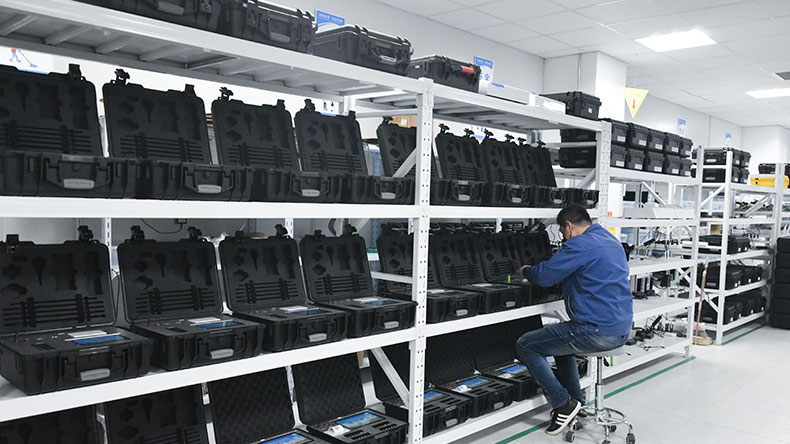WhatsApp:
+86 18866361895
WhatsApp:
+86 18866361895
The fast inspection room in school canteens is an important department established to ensure the safety of students' food, and its equipment configuration and plan should meet ···
 在线咨询
在线咨询

The fast inspection room in school canteens is an important department established to ensure the safety of students' food, and its equipment configuration and plan should meet the needs of fast, accurate, and comprehensive testing. The following is an overview of the equipment configuration and plan required for the fast inspection room in the school cafeteria:
1、 Equipment configuration
Food Safety Rapid Detector:
Function: It has functions such as spectrophotometric detection and colloidal gold immunochromatographic detection, and is used for rapid detection of pesticide residues, veterinary drug residues, illegal additives, heavy metals, etc.
Features: Easy to operate, fast detection speed, accurate and reliable results.
Microbial rapid detection instrument:
Function: Used for rapid detection of microbial contamination in food, such as Escherichia coli, Salmonella, etc.
Features: High sensitivity, able to quickly provide microbial contamination risk assessment.
ATP fluorescence detector:
Function: To detect cleanliness and evaluate the cleanliness and microbial contamination level of food surfaces.
Features: Non destructive detection, real-time reflection of the cleanliness status of food surfaces.
Electronic balance:
Accuracy: Achieve 0.01g or higher.
Function: Used for sample weighing to ensure the accuracy of experimental data.
PH meter and thermometer:
Function: Measure the pH and temperature of food, evaluate the freshness and safety of food.
Microscope:
Function: Used to observe microorganisms and impurities in food samples and assist in microbial detection.
Centrifuge:
Speed: reach 24000 r/min or higher.
Function: Used for sample centrifugation and separation during sample pretreatment process.
Vortex mixer:
Function: Used for sample mixing and extraction during sample pre-processing to improve detection efficiency.
Refrigerators and freezers:
Function: Used for storing reagents and samples, ensuring the stability of reagents and the freshness of samples.
Other auxiliary equipment:
Disposable consumables such as pipettes, test tubes, suction tips, filter paper, as well as constant temperature incubators (for microbial cultivation), ultrasonic cleaners (for sample cleaning), etc.
2、 Scheme configuration
Site selection and layout:
The laboratory should be located near the school cafeteria for quick sampling and testing.
Reasonably plan different functional areas, including sample receiving area, sample processing area, detection area, data processing area, and reagent storage area, to ensure that each area has clear functions and smooth flow.
Environmental control:
Install a temperature and humidity control system to maintain the laboratory temperature between 20-25 ℃ and humidity between 50% -70% to meet the environmental requirements of different testing projects.
Security protection:
Configure emergency eye wash stations, fire-fighting equipment, personal protective equipment (such as lab coats, gloves, masks, goggles), etc. to ensure the safety of laboratory personnel.
Data Management and Reporting:
Establish a laboratory data management system, including functions such as data entry, query, statistics, and report generation, to ensure data traceability and accuracy.
Regularly backup and test data to prevent data loss.
Personnel configuration and training:
Equipped with professionals with backgrounds in food science, chemistry, or biology, responsible for the daily operation and testing of the laboratory.
Regularly provide professional training to laboratory personnel, update their knowledge and operational skills in food safety testing, and ensure that testing work is scientific and standardized.
Quality Management System:
Establish a sound laboratory quality management system, including the development of standard operating procedures (SOP), quality control plans, instrument calibration and maintenance plans, etc., to ensure the standardization and accuracy of testing work.
Compliance with regulations:
Laboratories should comply with relevant national regulations and food safety standards to ensure the legality and compliance of testing work.
In summary, the equipment configuration and scheme configuration of the school cafeteria rapid inspection room should comprehensively consider multiple aspects such as testing needs, environmental requirements, safety protection, data management, personnel training, etc., to ensure the smooth progress of testing work and the accuracy and reliability of testing results.